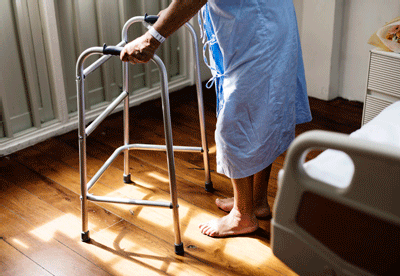Diabetes is reversible. That’s the exciting conclusion of a study I’m leading at Indiana University Health.
Two hundred and sixty-two patients with type-2 diabetes recently completed one year of a clinical trial examining the impact of a low-carbohydrate diet, which limits foods like grains and pasta while boosting consumption of healthy fats like avocados and butter. The diet didn’t restrict calories.
Using smartphone technology, health coaches worked with participants while physicians monitored and adjusted medications. A control group of 87 patients with diabetes received the American Diabetes Association standard nutritional treatment.
A full 94 percent of patients on the low-carb intervention have been able to reduce or eliminate their need for insulin. For six in ten patients, average blood sugar levels fell so low that technically, they had reversed their diabetes. These findings are promising for treating one of America’s deadliest, most expensive diseases.
Diabetes is a public-health emergency. Thirty million Americans suffer from diabetes. The illness is the nation’s seventh leading killer, with serious side effects
including heart disease, kidney damage, limb amputation, and blindness. Last year, diabetes cost the country about $327 billion in medical bills and lost productivity.
Despite this staggering cost, health experts have focused on managing the disease rather than reversing it. When patients consult the ADA website, they learn that “there is no cure for type 2 diabetes, but it can be managed.”
“Management” usually involves costly medications. Medical expenditures for people with diabetes total about $13,700 per year— double the figure for people without the disease.
Bariatric surgery, the procedure that helps people lose weight by stapling, binding, or removing part of the stomach, has even become a “first line” treatment for obese individuals with diabetes. This was once seen as a last resort, as it costs about $26,000 and one in six patients experiences complications. Yet in 2016, the ADA led 45 international diabetes organizations to begin recommending the surgery as standard treatment.
That’s misguided. Plenty of research— including our own— shows that dietary adjustments can curb diabetes. A 2017 study from University of California San Francisco found that 60 percent of diabetic patients put on a very low-carb diet were able to stop common medications for their condition at one year. A 2008 study found that
95 percent of patients on a low-carb diet either cut back on diabetes medications or stopped taking them entirely. With conventional treatment regimens, according to a study in Diabetes Care, only 0.1 percent of patients achieve complete remission.
Nutrition-centric treatment was once the standard. In the 20th century, people with diabetes were told to avoid foods high in carbohydrates. That treatment fell from favor with the commercialization of insulin. Employing insulin, patients could again consume carbohydrates, and when the U.S. government launched its low-fat, high-carbohydrate advice via the dietary guidelines in 1980, those with diabetes fell in line with everyday Americans, eating bread and pasta with gusto.
Critics worry that low-carb diets are too difficult. But in our study, 83 percent of patients stayed with it. With individualized support, changing a grocery list is far less daunting than a lifetime of dependency on costly medications. Reversing diabetes is possible— and should be our goal.
Sarah Hallberg, DO, MS, is the medical director and founder of the Medically Supervised Weight Loss Program at Indiana University Health and an adjunct professor at Indiana University’s School of Medicine. She is also the medical director at Virta Health.
